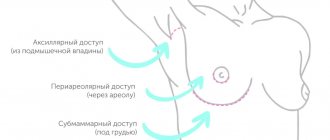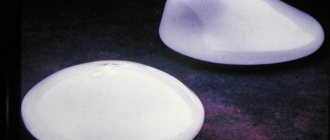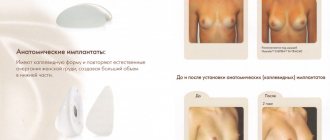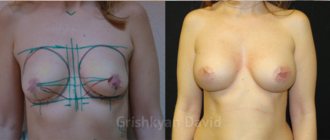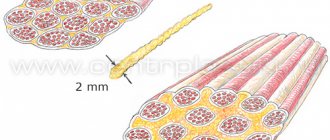Breast augmentation (enlargement mammoplasty) is the cherished dream of many women. In all centuries, beautiful breasts have been considered one of the main adornments of a woman. Mammoplasty is one of the most beautiful and revealing plastic surgery operations. In Rostov-on-Don, and throughout the world, breast augmentation (mammoplasty) is one of the most popular operations.
Breast augmentation (mammoplasty) allows you to increase breast volume, improve breast shape, make breasts more elastic, reduce asymmetry, restore the shape of the mammary glands after breastfeeding and childbirth, emphasize the waist and give the figure a seductive slimness and femininity. Your new bust will make its beautiful owner proud!
Breast augmentation methods have been developed for decades and have now been brought to perfection. At the Health Factory MC in Rostov-on-Don, breast augmentations are performed using the most modern technology, which helps keep the size of scars to a minimum, and subsequent rehabilitation after breast augmentation is quick and comfortable.
Breast augmentation (mammoplasty) is used at the Health Factory MC Rostov-on-Don: Using implants, Lipofilling (enlargement with your own fat). Composite breast augmentation
Composite breast augmentation is a new, modern method of breast augmentation that allows you to combine the advantages of different methods of breast augmentation to create beautiful and soft breasts. Composite breast augmentation combines the advantages of different methods of breast augmentation: Implants, lipofilling, fillers (if there is absolutely nowhere to get fat)
Composite breast augmentation allows you to obtain a fairly large volume and beautiful breast shape using small implants. Implants will provide a predictable, reliable size and shape. Your own adipose tissue (or filler in the absence of adipose tissue) will “hide” the implants and give the breasts natural softness, helping to correct individual “features” of shape and asymmetry. Composite breast augmentation uses significantly smaller implants to better preserve breast sensitivity.
For breast augmentation, the Health Factory MC Rostov-on-Don uses (your choice) high-quality implants from the following companies:
- Silimed (Brazil)
- Polytech (Germany)
- Mentor (USA)
- Eurosilicone (France)
- Sebbin (France)
- Nagor (UK)
- Arion (France)
Implants used for breast augmentation have valid certificates of conformity - permission for use in Russia, the European Union, FDA approval, and a lifetime warranty. For each installed implant, an individual barcode and sticker cards with the implant number are provided. During the consultation, you can see samples of implants from these companies and try on different shapes and sizes of implants.
MAMMOPlasty in ROSTOV-ON-DON
For every woman, the breasts are an important aesthetic and functional part of the body.
Therefore, a woman’s self-confidence often directly depends on how satisfied she is with the proportions of her body. Breast augmentation surgeries have been in great demand among women all over the world for many years. For many patients, a breast lift or breast augmentation is not just a whim, but a relief from a serious aesthetic problem and psychological complexes. Most women who decide to undergo this procedure are usually faced with the problem of regaining shape after childbirth and breastfeeding. The operation helps such patients correct their size and restore their sense of sexual attractiveness. Medical mammoplasty specialists in Rostov-on-Don have all the necessary equipment that allows any woman to get the breast of her dreams at a relatively low price.
Breast augmentation methods - Location of surgical access (incision and scar)
determined at a consultation with a plastic surgeon at your request and can be:
- axillary,
- along the edge of the areola or
- in the area of the breast crease.
The length of the postoperative scar is 4.5 cm (5.5 cm if in the axillary region).
“Pros” and “cons” of various surgical approaches (incision and scar) for breast augmentation
1. Submammary access for breast augmentation
"pros"
- It does not affect the own breast tissue and does not form scars in the breast tissue, and therefore does not subsequently interfere with breastfeeding.
- The scar area is hidden from prying eyes in a natural fold of the skin.
- The swimsuit hides this area.
- There are no large vessels and nerves in the access area, and therefore there is less risk of damage.
- Technical simplicity of monitoring the accuracy of implant placement during surgery
"minuses"
- The access is located close to the mammary gland itself and without underwear, even the thinnest one, and a small scar is noticeable in the lying position.
- When you raise your arms, your swimsuit may move up and expose the scar area.
2. Paraareolar (along the lower edge of the areolas) access for breast augmentation
"pros"
- The scar area is hidden from prying eyes as much as possible. Even the most revealing swimsuit hides this area
- It is possible to further disguise the scar by making it along the border of pigmented and non-pigmented skin.
- The scar is located in an area of thin skin, parallel to Langer's lines. This allows you to get the most invisible scar.
- You can immediately reduce the areola of the nipple
- You can simultaneously do a small tightening of the breast tissue and correction of the shape and size of the areolas
- Technical simplicity of monitoring the accuracy of implant placement during surgery
- There are no large vessels and nerves in the access area, and therefore no risk of damage.
- There is no need for intubation anesthesia and the use of muscle relaxants during anesthesia
"minuses"
- Injury to the lower sectors of the mammary glands can lead to a decrease in the amount of milk during subsequent lactation
- If the areola is small, it may be difficult to install large implants
3. Axillary access for breast augmentation
"pros"
The scar area is removed from the mammary gland and an inexperienced eye will not understand that this is an incision after breast augmentation, but, unfortunately, there are fewer and fewer inexperienced eyes every year.
"minuses"
- A scar in the armpit area is always visible, especially in a swimsuit and sleeveless summer clothes.
- The scar in the axillary region is usually longer than when installing implants through other approaches.
- On the beach, the scar is not covered by a swimsuit and may become hyperpigmented
- A deeper anesthesia is required, with mandatory tracheal intubation and the administration of relaxants (anesthetic risks increase)
- Limited choice of implants. Modern polyurethane-coated implants cannot be placed through the axillary approach.
- It is impossible to correct minor deformations/asymmetries of the mammary glands without additional incisions
- Wider interthoracic distance
- More likely and more pronounced animation deformations
- It is more likely that the implants will shift to the sides (towards the armpit)
- Presence of large vessels and nerves in the access area.
- Greater risk of bleeding and seroma, all other things being equal
- Pain syndrome is more pronounced
- The technical difficulty of monitoring the accuracy of the location of an anatomically shaped implant during surgery.
- If even a small lift/symmetrization of the mammary glands is necessary, additional incisions are required
- Contraindicated in the presence of even mild ptosis, tubular deformation, constriction of the lower slope
- Impossibility of replacing the implant from this access. If it becomes necessary to replace the implant, an additional incision will be made.
Navel access for breast enlargement
"pros"
- The incision area is remote from the mammary gland and an inexperienced eye will not understand that this is an incision for breast augmentation.
"minuses"
- Limited selection of implants. Possibility of installing only “empty” prostheses filled with saline solution.
- A very difficult, traumatic and non-physiological approach using video endoscopic technology. High risk of bleeding during and after the intervention, asymmetry due to displacement of implants.
- If even a small breast lift is necessary, additional incisions must be made
- The scar is larger than with other types of access.
- With this access, only submammary implant installation is technically possible
- Modern polyurethane-coated implants cannot be placed from this approach
- Impossibility of replacing the implant from this access. If it becomes necessary to replace the implant, additional access will be performed.
- It is used extremely rarely.
Where to get plastic surgery
When deciding on mammoplasty, patients ask many questions: where in Rostov-on-Don to get plastic surgery at the best price, which clinic to go to. First of all, you need to understand that you should not skimp on your health. A clinic should be chosen not based on the principle of the lowest price for breast surgery, but on the basis of its level of competence in the field of plastic surgery. The medical department employs experienced and qualified surgeons who are able to find an individual approach to each patient. We use the most modern medical equipment and apply innovative minimally invasive plastic surgery techniques.
What is the cost of breast surgery
The price of mammoplasty depends on many factors. About half of the cost is the payment for the work of a surgeon. During the consultation, he assesses the bust size, general anatomy and determines the required type of implants and installation method. Diagnosis is individual for each woman and the specialist takes into account the wishes, physical and personal characteristics of the patient. Level of competence and experience, membership in professional associations, as well as reputation and reviews influence the cost of these services.
Also, the price depends on the technical equipment of the clinic and the cost of staying in its hospital. Our medical center has a comfortable hospital with 25 beds and rooms for 1, 2 or 3 patients.
Another factor is the patient’s desire to have implants installed. Their cost is about 20-30% of the price of the service and will depend on the brand, size and shape of the implant. There is no point in saving money here either, because low-quality implants can become deformed, migrate, and capsular contracture is more likely to form around them.
TYPES OF MAMMOPlasty:
- augmentation;
- reduction;
- tubular breast lift;
- reconstructive;
- areola correction.
Indications:
- aesthetic dissatisfaction with the shape or size of the breasts;
- loss of elasticity and previous volumes;
- restoration of shape in case of partial or complete loss of the mammary gland;
- too large volumes affecting quality of life and health.
Contraindications:
- blood clotting disorder;
- oncology;
- diseases of the heart, liver, kidneys and lungs;
- diabetes;
- mental disorders.
Preparing for surgery
A couple of weeks before the procedure, you should stop taking any active medications, and it is also advisable to abandon all bad habits for the entire rehabilitation period to speed up recovery.
It is mandatory to pass a number of general tests and undergo an ECG, fluorography, ultrasound and consultation with specialists in related fields: gynecologist, mammologist, therapist.
The operation itself takes from 30 minutes to 2 hours and is performed under general anesthesia, with the exception of cases of local anesthesia at the discretion of the surgeon.
Rehabilitation and recovery
After the operation, the patient remains in the hospital for one to four days. After this, she is given a memo with recommendations for rehabilitation. This information must be taken seriously; the result of your transformation depends on compliance with the surgeon’s instructions. It takes 6 to 10 months for the breasts to take the final desired shape. During this period, you must wear special compression garments that support your shape. And during the first month, a bandage that can only be removed while swimming. It is recommended to cancel any physical activity for a couple of months, not lift anything heavy, and return to sports very gradually. Also refrain from visiting the sauna, bathhouse and solarium.
Breast augmentation methods (Plane of implant installation)
Depending on the characteristics of the patient and her wishes, breast implants are installed :
- Under the muscle ("submuscular", under the pectoralis major muscle, usually in a Dual plane - "two-plane installation")
- Under the gland (“subglandular”, “under the fascia of the gland”, “on the muscle”).
Each of these options has its pros and cons.
When installing submuscular implants:
«+»:
- the muscle covers and camouflages the upper edge of the implant
- the edges of the implants in the décolleté area are hidden by muscle
- the volume of the pectoralis major muscle will be added to the upper edge of the implant, which creates additional breast volume in this area.
- reduces the risk of contracture when installing textured and smooth implants
«-«:
- The volume of highly developed pectoralis major muscles in the décolleté area sometimes looks excessive
- The operation is more traumatic and technically more difficult (on average, plus one hour to the time in the operating room, higher risk of bleeding)
- The postoperative period is more difficult (more severe pain in the first 2-3 days after surgery, limitation of raising arms and a ban on driving for 3 weeks, limitation of physical activity on the pectoralis major muscles)
- Risk of animation deformation (mobility of implants due to tension of the pectoralis major muscles)
- The risk of visualization (visibility) of the pectoralis major muscles on the surface of the implant with well-developed muscles in thin girls.
- Sports loads on the pectoralis major muscles are undesirable for life - this can lead to breast deformation, displacement of implants (if the implants are not polyurethane) down and to the sides and premature wear of the implants
- When installing implants under the muscle, the pectoralis major muscle is cut (see picture) and it is impossible to return it to its previous position, even if the implant is removed
- If implants are removed, the cut pectoralis major muscles may distort the shape of the breast when moving.
Who prefers to have an implant “under the muscle”:
- if you need to place “round” implants
- if the upper edge of the implant is this
- it is possible to follow the recommendations in the postoperative period (limitation of raising arms for 3 weeks, no heavy lifting, for example, picking up a child for 6 months)
When installing subglandular implants:
«+»
- Less traumatic surgery
- Easier postoperative period (not severe pain, fewer restrictions)
- A couple of weeks after the operation, you can return to physical labor and even lift weights (for example, a child),
- No risk of animation deformations
- Retains 100% of the strength of the pectoralis major muscle - important for professional athletes and people who work with their hands
- In case of removal of implants, the anatomy of the pectoralis major muscles is not disturbed and there is less change in the shape of the own breast
«-» :
- For thin people, the edge of the implant may be visible in the décolleté area when using some forms of implants.
- You have to choose more expensive implants without a “step” along the upper edge
- There is a greater risk of capsular contracture when using textured, microtextured and smooth implants
- To reduce the risk of capsular contracture, it is necessary to use more expensive polyurethane-coated implants
- To improve the shape of the neckline, lipofilling may sometimes be required.
Who prefers to have an implant placed “under the gland”:
- For those who play or plan to play sports
- For those who work with their hands
- Mothers of small children
- For those who have a pronounced layer of soft tissue in the décolleté area. If the ribs in the décolleté area are not visible, then almost any implant can be placed under the gland
Does not depend on the location of the implant ("under the muscle" or "under the gland"):
- Risk of implant displacement downwards. The muscle does not hold the implant, but only covers and camouflages it in the décolleté area. The only reliable way to ensure against downward displacement of implants at the moment is the use of polyurethane-coated implants.
- The risk of breast sagging along with the implant and the gland “hanging” from the implant. This risk depends on the degree of laxity of the soft tissue of the breast.
- Risk of overturning of anatomical implants. The only way to avoid this risk is to use polyurethane-coated implants.
- Possibility of breastfeeding after breast augmentation. The function of breastfeeding does not depend on the presence of implants in the breast, and is impaired only when a breast lift is performed (any lift, even without implants)

